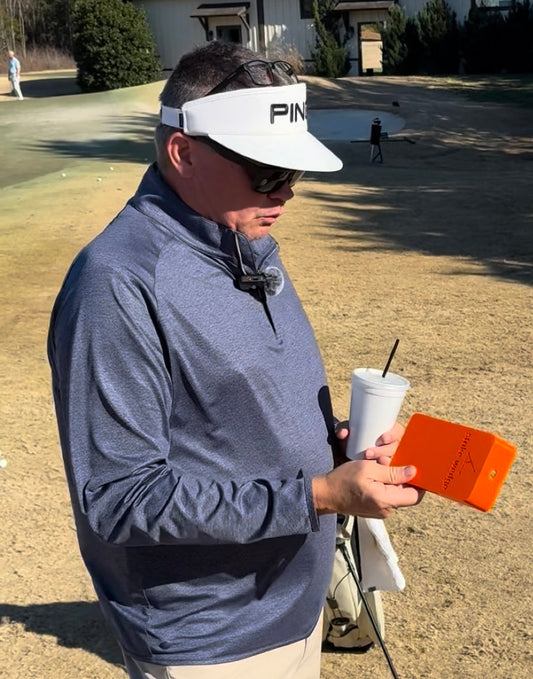The Science of Spin: Unlocking Short Game Secrets
Share
How Spin Works
Spin is created when the clubface grips the ball at impact, generating friction through clean contact. This friction causes the ball to spin backward, helping it stop quickly or roll out at a controlled pace. The cleaner the grooves and the better the contact, the more friction—and the more spin!
A key concept here is spin loft, which is the difference between the dynamic loft of the club at impact and the attack angle (the path the club is traveling). If this difference is too high or too low, you lose control over spin. The ideal spin loft range is 50-55 degrees. Getting this right requires precise technique, combining club selection and ball-striking accuracy.
The Right Equipment for Spin and Why It’s Important
To consistently generate spin, the right combination of equipment and technique is essential:
• Premium Golf Ball: Balls with a urethane cover (like the Titleist Pro V1) provide better friction between the ball and the club grooves. Urethane grips the grooves more effectively than harder covers, like ionomer, resulting in better spin and control.
• Clean Grooves: Sharp and clean grooves help grab the ball during impact. Over time, grooves can wear down or get clogged with dirt, reducing their ability to generate spin, so it’s essential to maintain your clubs.
• Lofted Club: A higher-lofted wedge (like a lob wedge) creates a steeper angle of attack, which helps increase spin loft and, in turn, generates more backspin.
A Simple Drill to Prove You Can Spin the Ball
Here’s a quick drill to show you how easy it is to spin the ball when using proper technique and equipment:
1. Use a premium golf ball with a urethane cover (e.g., Titleist Pro V1).
2. Ensure your clubface is clean, and your grooves are sharp.
3. Use your most lofted club (typically a lob wedge).
4. Tee the ball up about 1 inch to ensure you make clean, ball-first contact.
5. Focus on hitting a low, compressed shot, making sure to strike the ball before the ground.
The ball will almost certainly spin when you follow these steps. This drill is designed to show that when you make solid, ball-first contact and use the right equipment, spin is achievable.
The Lesson: Why Ground-First Contact Ruins Spin
This drill highlights a common issue many golfers face: ground-first contact. Most of the time, the ball isn’t spinning as much as we want because the club is hitting the ground first, which causes grass or dirt to get trapped between the ball and the clubface. This drastically reduces the friction needed for spin.
By teeing the ball up, you ensure that you’re making clean, ball-first contact, eliminating any interference from the turf. Unfortunately, you can’t tee the ball up in a real game situation, so you’ll need to improve your attack angle and low-point control to consistently hit the ball before the ground.
This is where the Strike Wedge can help. The Strike Wedge gives you a visual and physical guide to help you feel and understand a steeper angle of attack. Practicing with it will train you to make cleaner contact and improve your ability to generate spin naturally.





